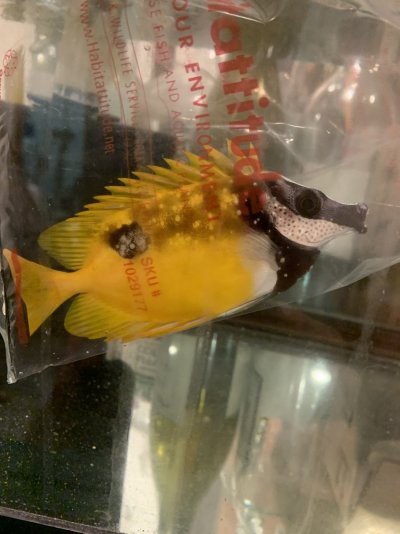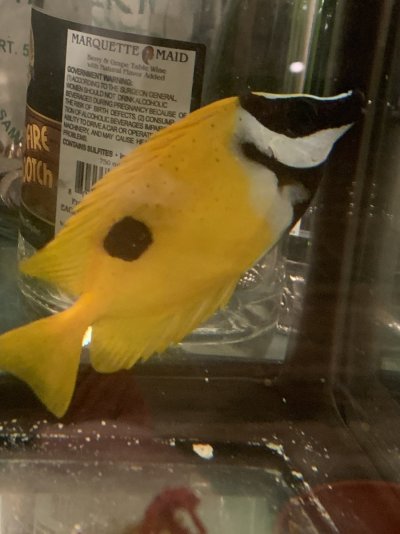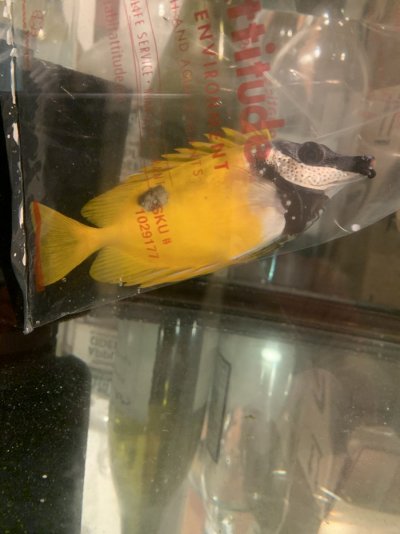- Joined
- Feb 18, 2020
- Messages
- 114
- Reaction score
- 88
I picked this guy up at the store for cheap because it looked like it was about to die from what looked like black ich. When I got it home it kept color changing. After 10 minutes of being out in the qt tank I can see the spots again but when it was in the bag it’s skin looked smooth. Anyone have thoughts?
the two pics in the bag were taken 2 minutes apart



the two pics in the bag were taken 2 minutes apart





















